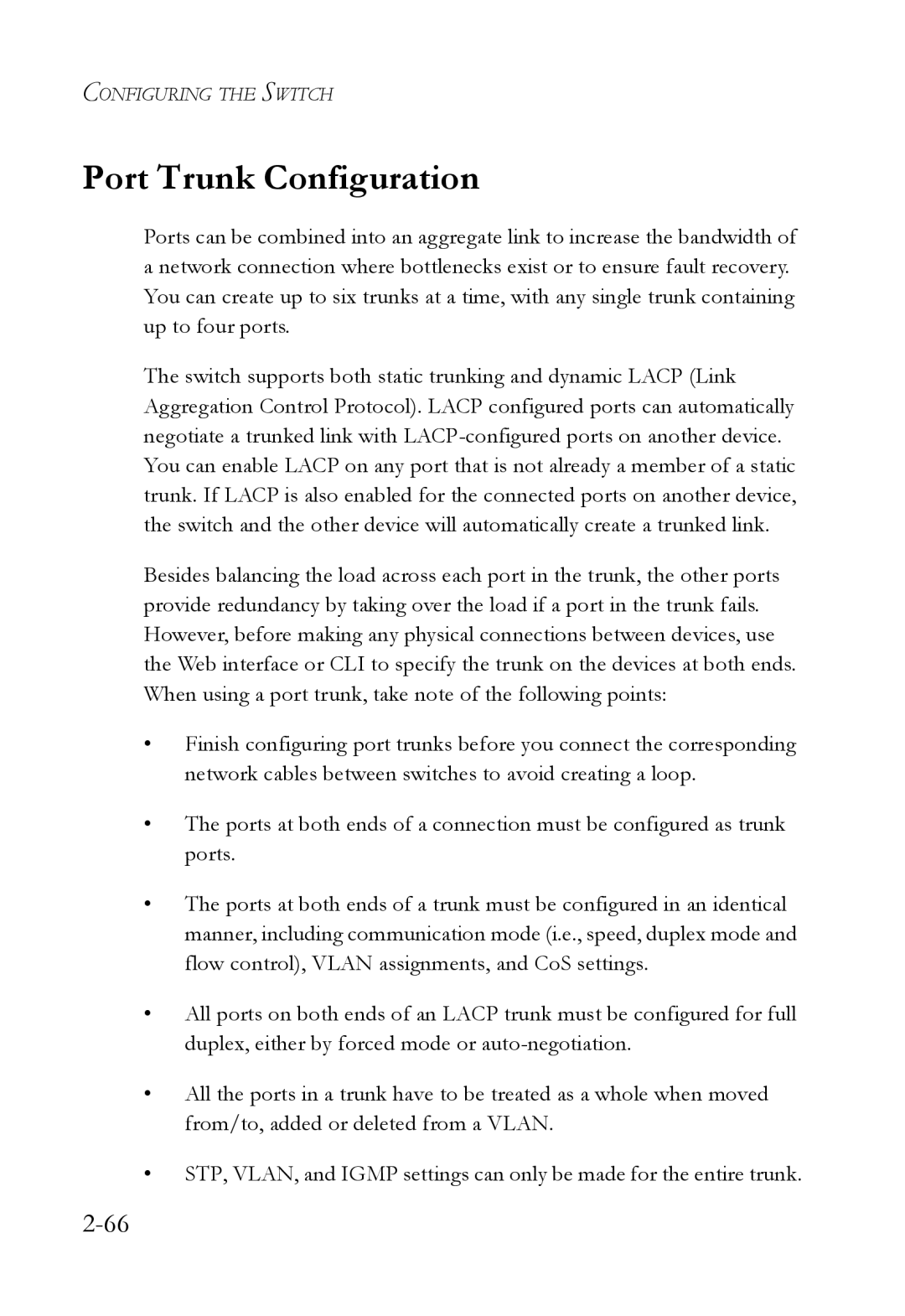CONFIGURING THE SWITCH
Port Trunk Configuration
Ports can be combined into an aggregate link to increase the bandwidth of a network connection where bottlenecks exist or to ensure fault recovery. You can create up to six trunks at a time, with any single trunk containing up to four ports.
The switch supports both static trunking and dynamic LACP (Link Aggregation Control Protocol). LACP configured ports can automatically negotiate a trunked link with
Besides balancing the load across each port in the trunk, the other ports provide redundancy by taking over the load if a port in the trunk fails. However, before making any physical connections between devices, use the Web interface or CLI to specify the trunk on the devices at both ends. When using a port trunk, take note of the following points:
•Finish configuring port trunks before you connect the corresponding network cables between switches to avoid creating a loop.
•The ports at both ends of a connection must be configured as trunk ports.
•The ports at both ends of a trunk must be configured in an identical manner, including communication mode (i.e., speed, duplex mode and flow control), VLAN assignments, and CoS settings.
•All ports on both ends of an LACP trunk must be configured for full duplex, either by forced mode or
•All the ports in a trunk have to be treated as a whole when moved from/to, added or deleted from a VLAN.
•STP, VLAN, and IGMP settings can only be made for the entire trunk.
